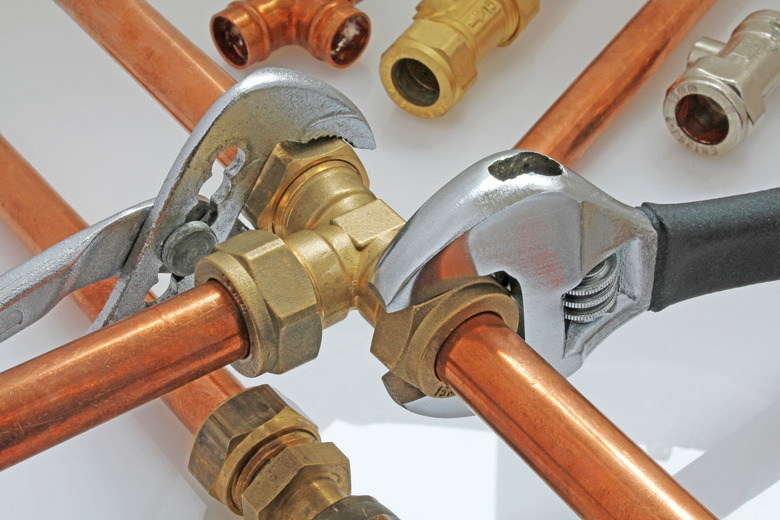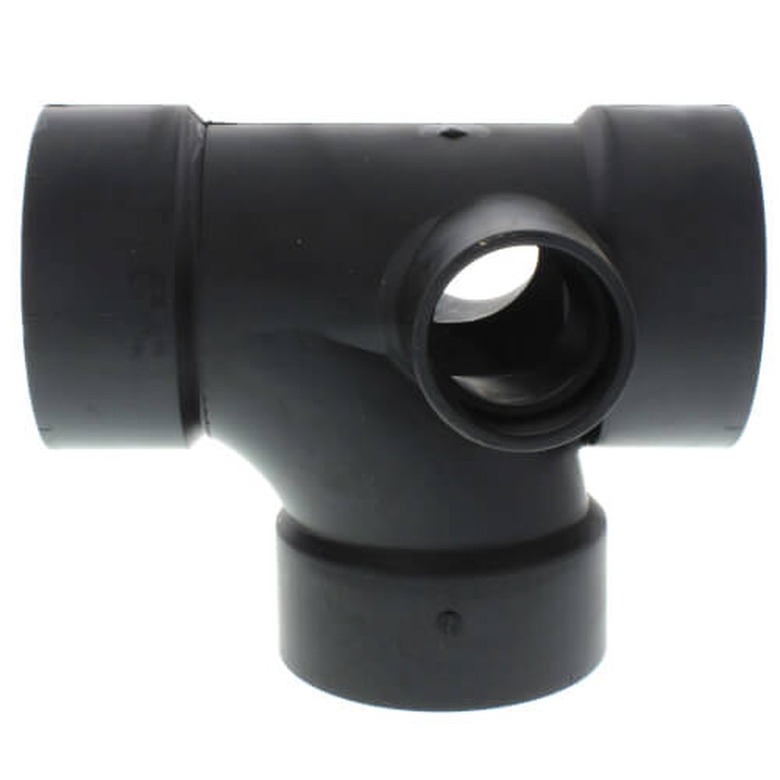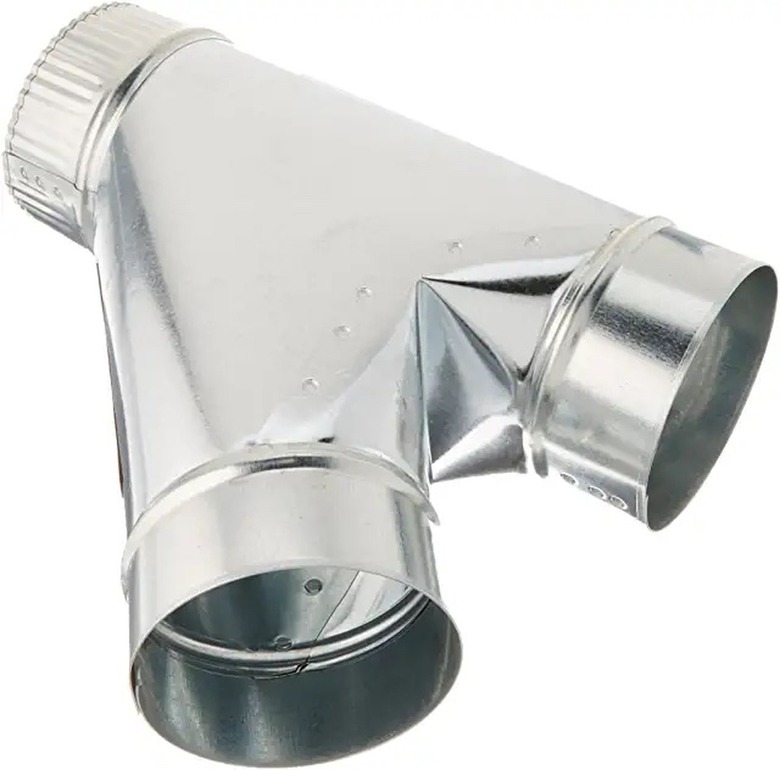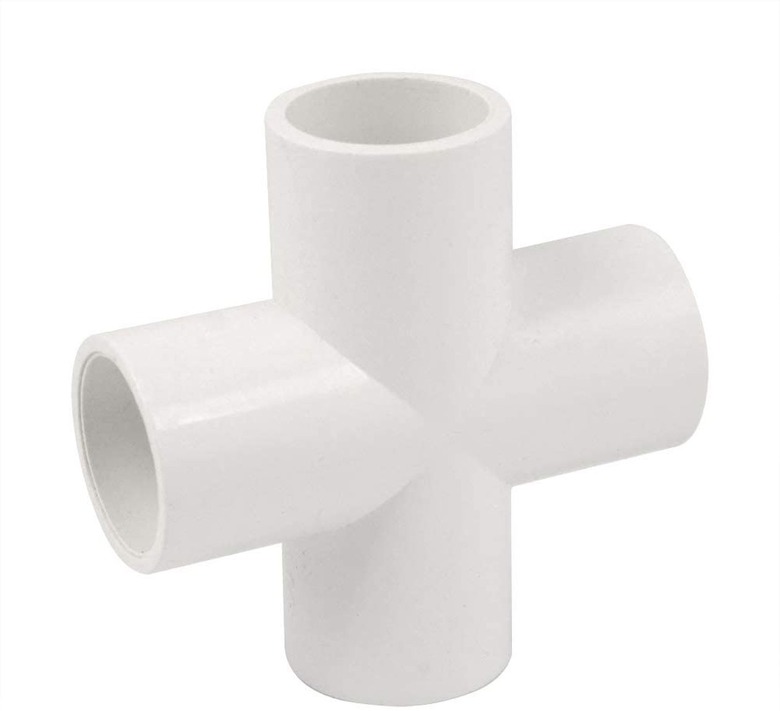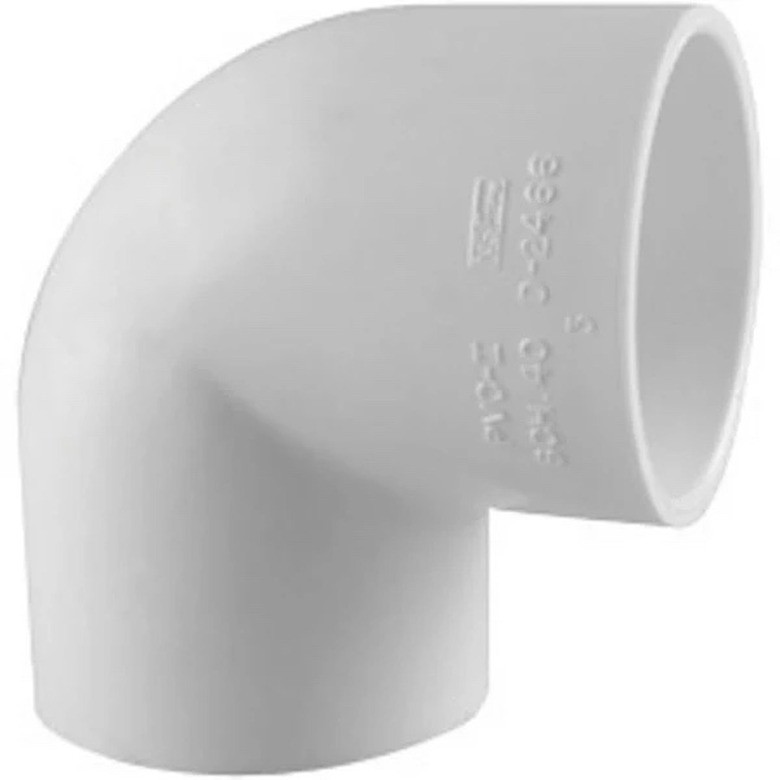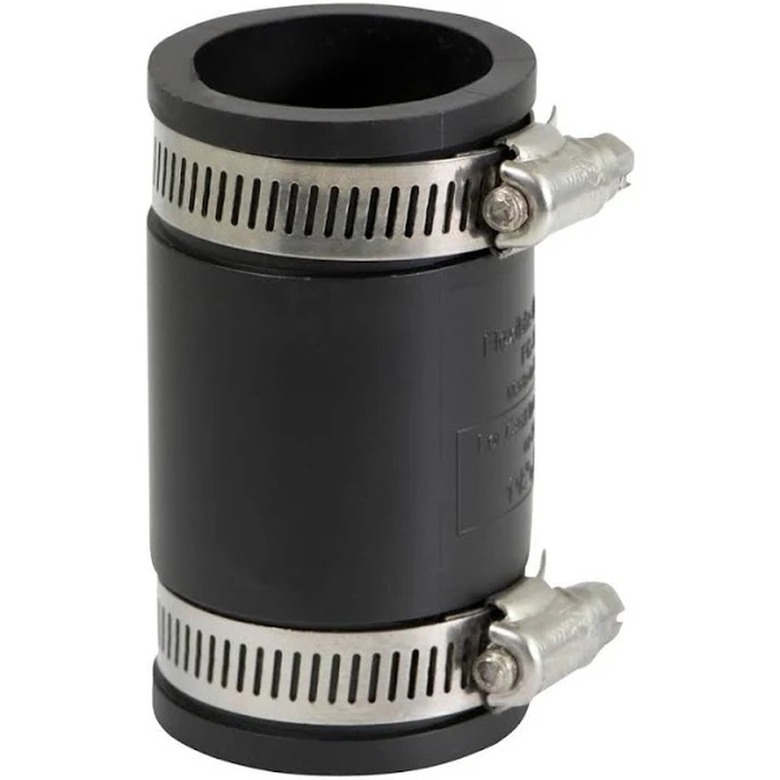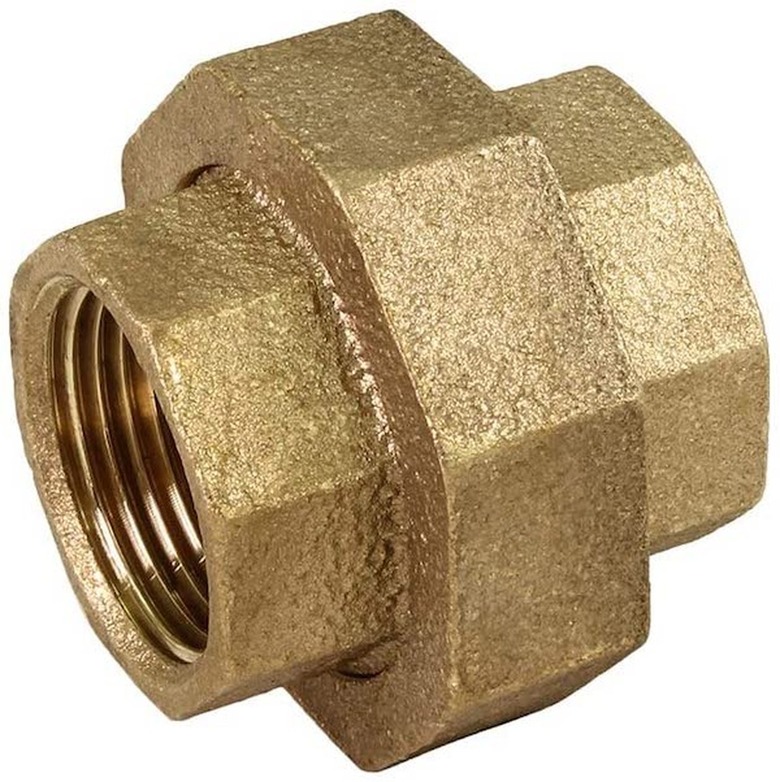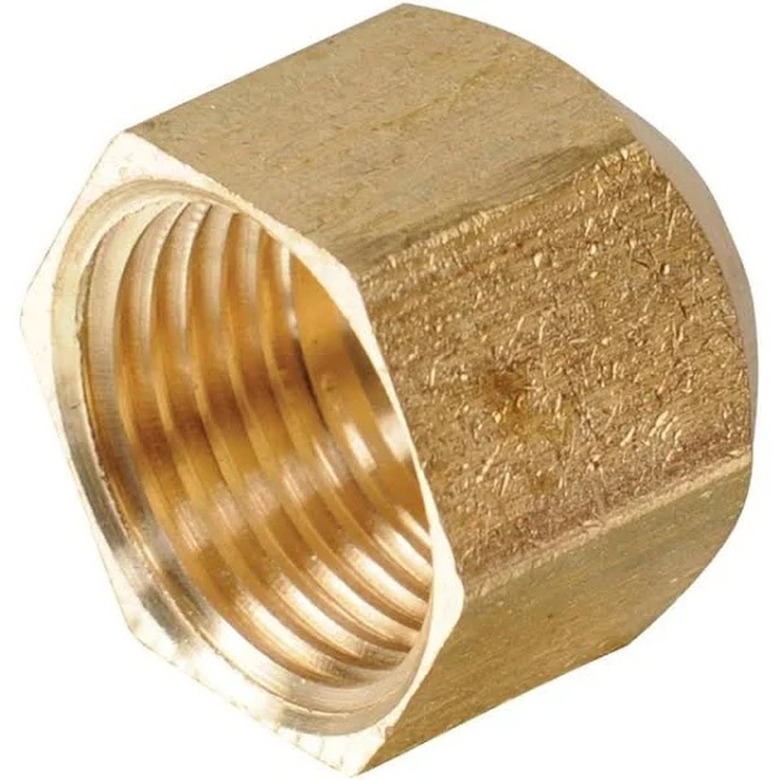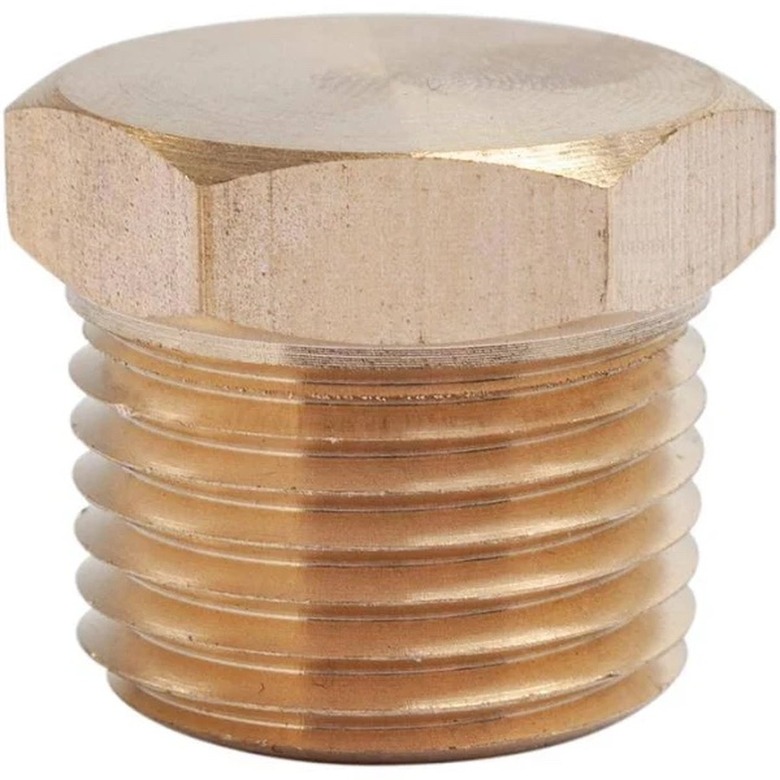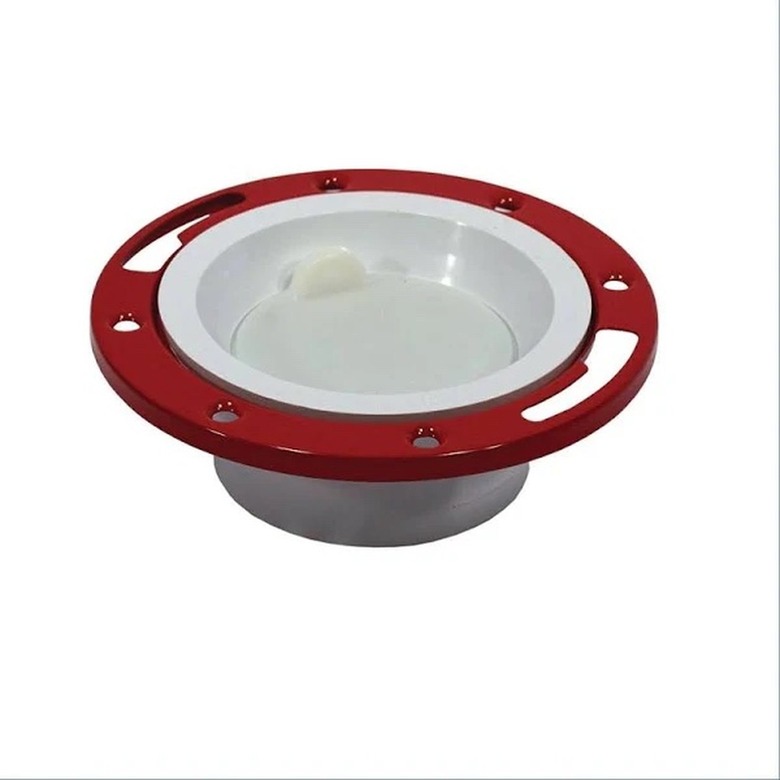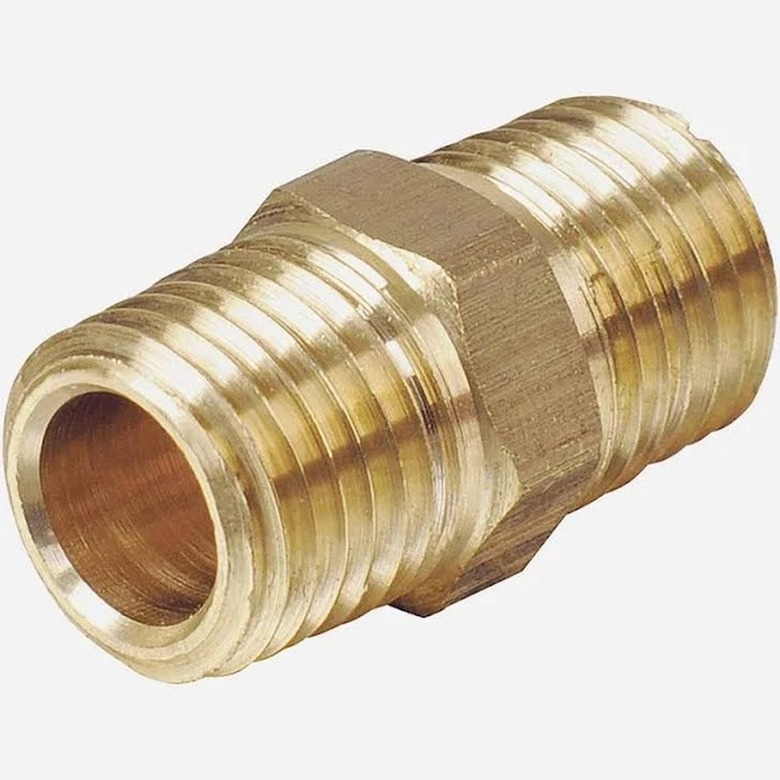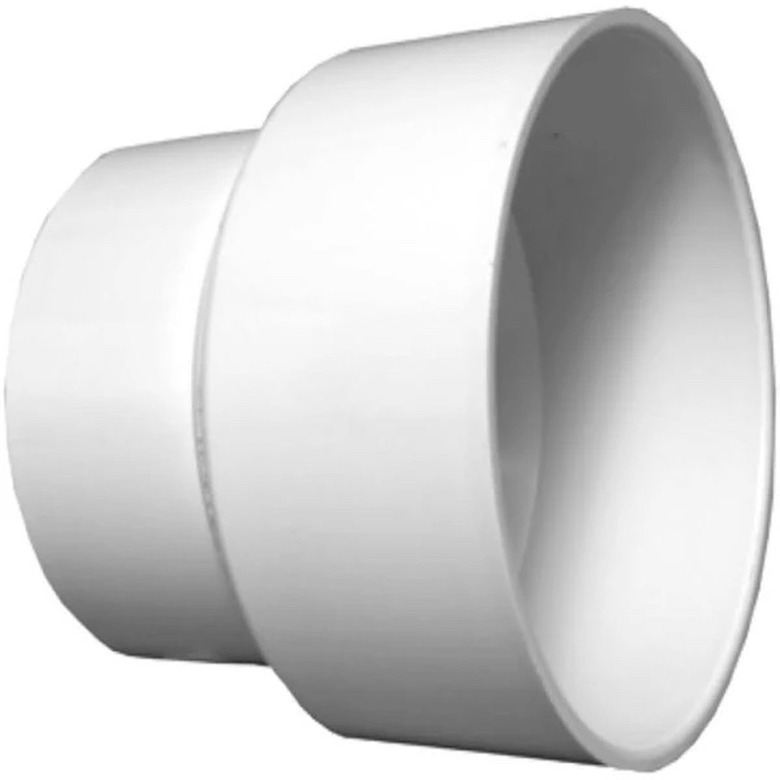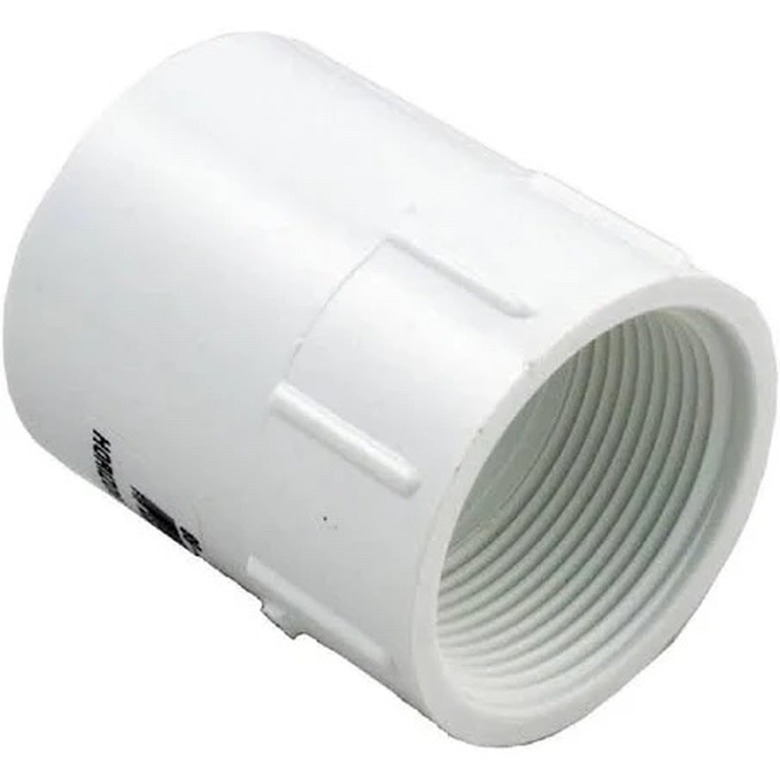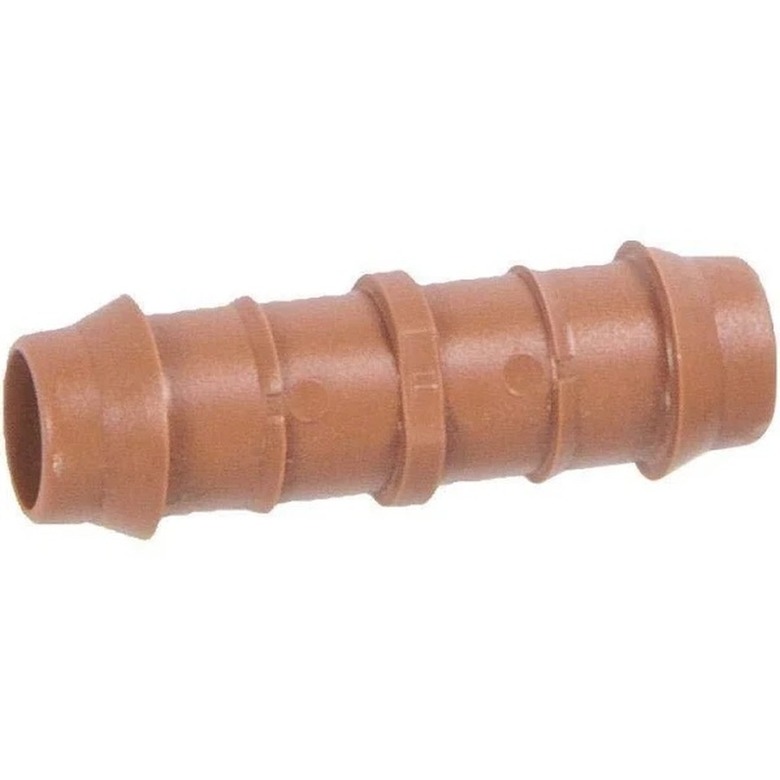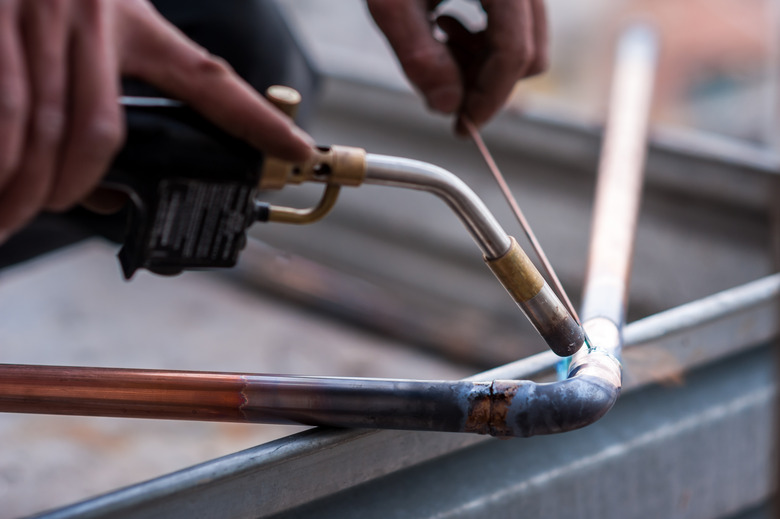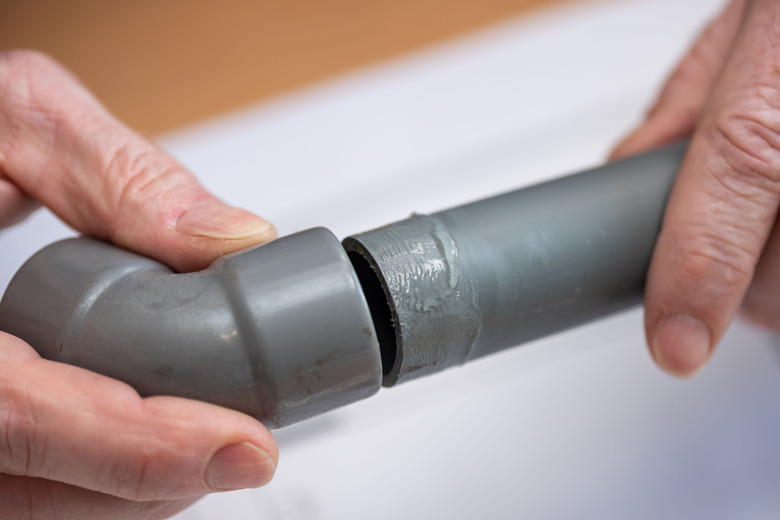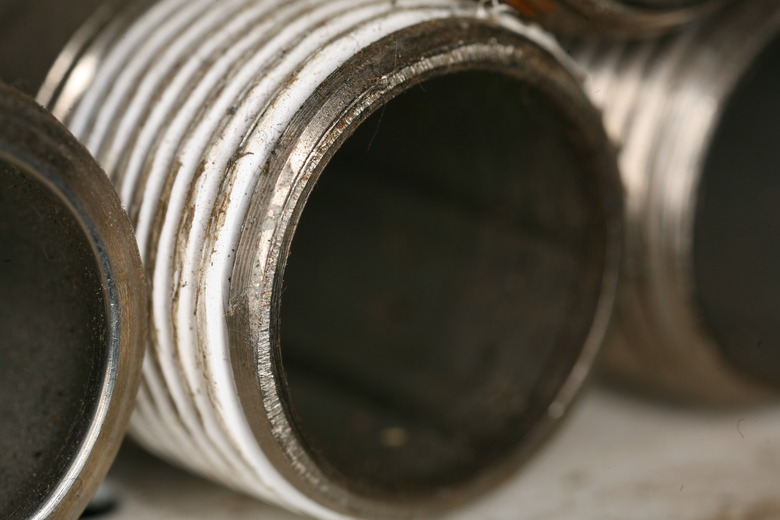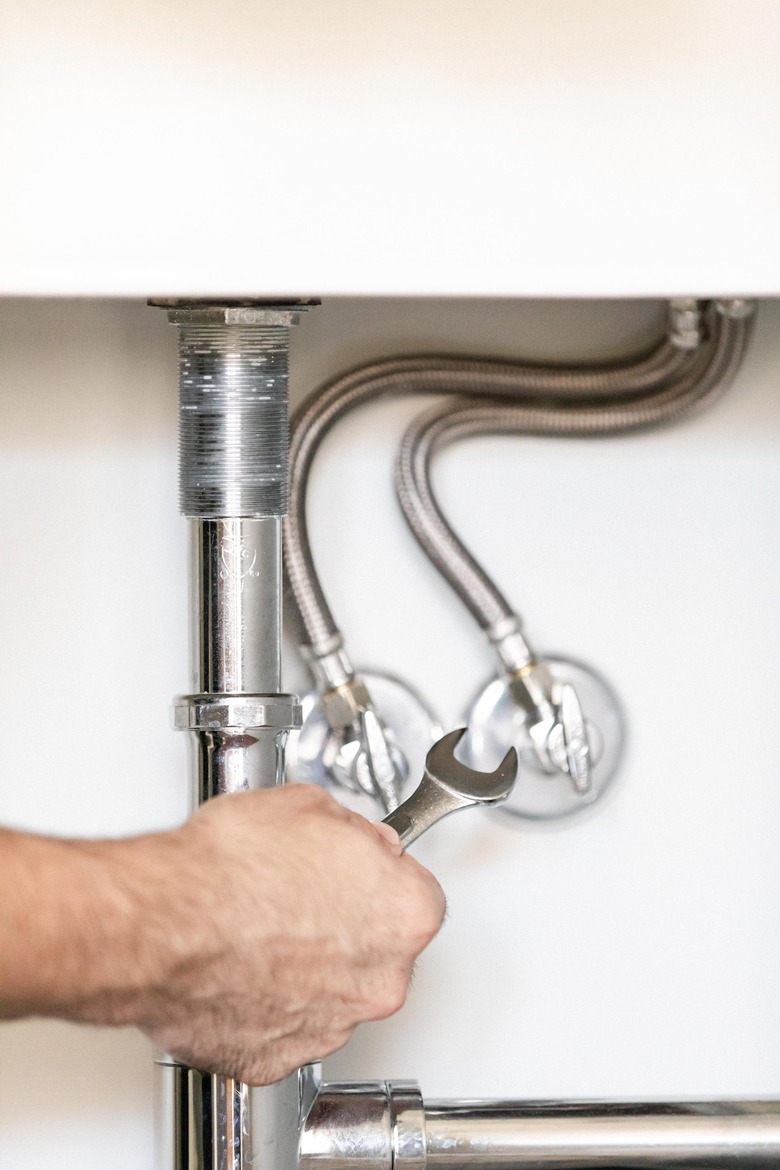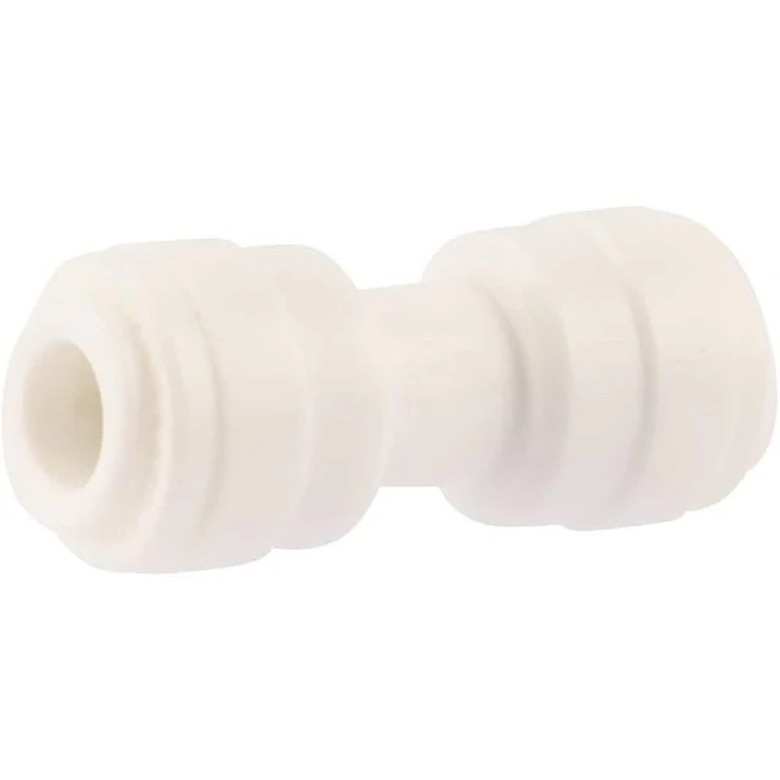The 18 Types Of Pipe Fittings Explained
We may receive a commission on purchases made from links.
Whether you're attempting a plumbing project yourself or hiring a professional plumber to do the job, it's good to know the terminology for the various pipe fittings that might be needed. Some pipe fittings look similar or have similar applications, but using the wrong one might cause plumbing problems, or it may not meet local plumbing codes. These 18 fittings are the types most commonly used for water supply, drainage, and venting for the plumbing system in any home.
1. Tees and Sanitary Tees
1. Tees and Sanitary Tees
A tee fitting is one of the easiest to recognize. It looks a lot like a capital T, allowing for flow in a straight line and at a 90-degree angle from the main flow. These come in handy wherever a water outlet is needed, such as adding water lines to each floor in a house off the main supply line. They're also used to combine two pipes into one outlet in some cases. A septic tank also has tees; if these are not preinstalled, you'll have to add them to help prevent tank failure.
A sanitary tee is used for drain connections with the top part of the capital "T" positioned sideways so the top of the letter T is vertical, allowing air to flow through for venting purposes. The part of the pipe that's horizontal is for wastewater coming from a horizontal pipe, traveling into the vertical drainpipe for effective drainage. These are often required by code and installed in this manner. The drainage plumbing beneath a bathtub is one common location for a sanitary tee.
2. Wyes
2. Wyes
A wye fitting resembles the lowercase letter "y," with the longer side as a straight run and the shorter side branching off from it at a 45-degree angle. Wyes are often used for drainage, such as two inlets going into one outlet. In a sanitary wye application, the letter "Y" lies on its side with the shorter angled part angling upward to connect to a vertical drainpipe; it may be connected to an elbow to make the vertical connection. The wastewater enters the wye from above and also from the side, joining to a horizontal drainpipe. Using a wye here instead of a sanitary tee is important because a tee shape could allow wastewater to flow back upstream, which could create plumbing issues.
3. Cross Fittings
3. Cross Fittings
A cross fitting is a lot like a tee, but the piece instead looks like a cross or plus sign. It has four equally sized openings designed to connect four pipes, each at 90-degree intervals from the next along the same plane. They're set up for one water inlet and three outlets or three inlets and one outlet. They're not as common indoors as many other pipe fittings, but they're often used for sprinkler and irrigation systems.
4. Elbows
4. Elbows
Elbows are one of the most common connectors used in plumbing, as they allow for "bends" that would be difficult to accomplish if not impossible in a single piece of pipe. They're usually angled at 90 or 45 degrees and sometimes at 22.5 or 60 degrees. Elbows connect runs of pipe wherever such angles are needed. They usually fit the same pipe size on each end; if one end is smaller, it's called a reducing elbow. Elbows might be socketed to fit over the end of a pipe, or they may have either male or female threads at either end.
Street elbows have female threads at one end and male threads at the other in many cases, but they may have a hub at one end and no hub on the other. If they're not threaded, they require solder or glue depending on their composition.
5. Couplings
5. Couplings
A coupling usually joins two pieces of the same pipe material that are also the same size. It's a solid piece that either has female threads on the inside of both ends or no threads. The nonthreaded version requires gluing if it's any form of PVC or soldering if it's copper. Couplings come in handy when a piece of pipe is too short, allowing you to add another pipe to extend it. They're also useful for repairing a leaky pipe. Reducing couplings or bell reducers have a different size at each end, allowing you to switch sizes along the pipe run. They're designed to be somewhat permanent once installed and may need to be cut out if there's a problem with one of the connected pipes later.
6. Unions
6. Unions
A union comes in handy in places where a coupling won't work to connect two threaded pipes, as the union has a nut as its own tightening mechanism. This means you won't need to twist the pipes into it; instead, you twist the union fitting onto one pipe end and then slide the nut over the other pipe and tighten the nut to complete the connection. Unions are available in the usual metal and PVC pipe materials and often have male and female ends. They're also easy to remove in the event of repairs somewhere along the line.
7. Caps
7. Caps
Sometimes, it's necessary to close off an end of a pipe, and a cap is a good way to do so. A cap fits over the top of a pipe to seal it. Some are threaded, but many are not and are instead kept in place with glue or solder, making the seal somewhat permanent. Caps may be made of a thermoplastic called ABS as well as PVC, CPVC, copper, stainless steel, or a chrome-plated brass.
8. Plug Fittings
8. Plug Fittings
Like a cap, a plug fitting seals off the end of an otherwise open pipe. The difference between a cap and plug is that a cap goes over the end of a pipe, while a plug partially fits into the pipe end with another part sticking out, somewhat like a stopper for a wine or champagne bottle. Plugs are often threaded to twist into the open end of a pipe, which also makes them easy to remove if necessary.
9. Flanges
9. Flanges
A flange is a piece that has a flat ring with holes for bolts on one end and a protruding part that accepts a pipe. In some cases, the fitting is threaded, but it may require welding. They're often used to mount the toilet over the waste pipe and for household pump systems. Some people use them when making industrial-style furniture as a means to secure pipes to slabs of wood, with the pipes serving as legs and the flanges as the leg-mounting hardware. They're often made of brass, copper, or PVC.
10. Nipples
10. Nipples
Unlike some of the other pipe fittings, nipples don't resemble their name in any way. Instead, they're short pieces of plumbing pipe with threads at each end on the outside of the nipple. These are often used to connect other pipe fittings rather than two pipes in a straight line. Some nipples, called closed nipples, are threaded over their entire exterior. Nipples may be made of any common plumbing metal or PVC.
11. Reducers
11. Reducers
A reducer is narrower at one end than the other, reducing the flow of liquid passing through it as it narrows. A concentric reducer looks like a symmetrical cone with the narrower opening centered on the narrow end, while an eccentric reducer has the narrow opening offset from the center a bit. The eccentric style helps reduce air bubbles in the pipe, especially when the pipes are horizontal. Reducers might have threads but not always.
12. Adapters
12. Adapters
Adapters are often used to change the type of end on a pipe, such as from male to female or from nonthreaded to threaded. They often have male threads on the narrow end, which goes into a pipe, and female or inside threads in the larger area that looks like a nut. They're usually used for PVC or copper pipes, and if they aren't threaded, they could be soldered, glued, or, in some cases, welded.
13. Barbed Fitting Connections
13. Barbed Fitting Connections
Plumbing fittings connect in various ways depending on the material and the application. Barbed fittings connect pipes to flexible plastic materials, such as PEX and polyethylene, or they may be barbed all over to accept flexible tubing at each end. The barbed fitting may be threaded on one end and then have concentric rings or barbs on the other end, which connects to a hose. Clamps and/or special crimping tools are often used with these to ensure the tubing doesn't slip off the barbs. The barbed piece is brass for a hot water connection and some form of plastic for cold water applications. Plastic barbed fittings also work on hot water lines as long as they're at least 18 inches from a heat source.
Barbed connections are available on all sorts of fittings, such as elbows, reducers, couplings, and tees. Glue usually isn't used with barbed fittings because most adhesives aren't compatible with both brass and plastic.
14. Sweat or Solder Connections
14. Sweat or Solder Connections
Sweating, or soldering, is required for many metal pipe scenarios where the pipe isn't threaded, such as when connecting plain copper elbows to unthreaded copper pipe. Due to the high heat required, this type of soldering requires a torch rather than a soldering iron. When done properly, this connection stays leak-free for years. It's used for both brass and copper pipes and requires extra care and a heat shield for the surrounding area while working to prevent burning joists and the like.
15. Solvent and Glue Connections
15. Solvent and Glue Connections
Solvent welding creates a permanent adhesive bond between two similar plastic plumbing pieces. Unlike a traditional adhesive, a solvent adhesive contains materials that soften the plastic as well as resin that helps it harden again, all within one product. The plastic pieces must be cut cleanly and deburred, as any debris may cause a faulty connection.
Use a solvent adhesive by first test-fitting the pipe and whichever connector you're using. Once you're sure of the fit, take the pieces apart and brush the solvent adhesive over the outside of the pipe and the inside of the connector. Push and hold the pieces together for at least 30 seconds and they'll permanently bond together. Be sure to read the adhesive label before use to ensure it works on the type of plastic you're connecting.
16. Threaded Pipe Connections
16. Threaded Pipe Connections
Threaded pipe connections are among the easiest to work with, as there's usually no gluing or soldering required. These come in handy for any PVC pipe connections as well as metal. If the project pipe has threads, any connections you make to it should also be threaded using the same materials. Threaded pipe fittings are generally the easiest to remove and replace since it's simply a matter of loosening the fitting with wrenches to remove it.
17. Compression Pipe Connections
17. Compression Pipe Connections
A compression fitting, often made of brass, copper, or plastic, has several pieces that work together to compress the connection for a tight seal. They're often used for water shutoff valves to toilets and sinks. Each compression fitting has a compression ring or "olive," a compression seat, and a compression nut. Tightening the nut tightens the other parts together, creating a good seal.
18. Push-Fit Connections
18. Push-Fit Connections
Push-fit connections are easy to use, as they simply slide over the pipe and push into place. The inner workings of a push-fit connector have stainless teeth on the inside and O-rings that help prevent leaks. The setup generally works well as long as the pipe inside the fitting has been cut properly and has no burrs or debris that might prevent a good seal. Push-fit connectors are often used for water-supply lines, but it's important to check local plumbing codes first, as they may not be allowed in areas that are difficult to access, such as deep inside a wall without an access panel.
References
- Water Heater Hub: Types of Plumbing and Pipe Fittings – Names and Pictures
- PVC Fittings Online: PVC End Types Explained
- Lincoln County, Washington: Top 10+ Mistakes of DWV Plumbing Design
- Zizi Engineering: Stainless Steel Eccentric Reducer
- PlumbingSupply.com: Brass Barb Fittings
- Pipe Fittings & Flanges: Compression Fittings
- Plumbing & Mechanical: The Solvent-Welding Process
